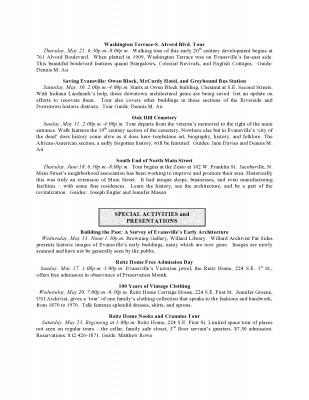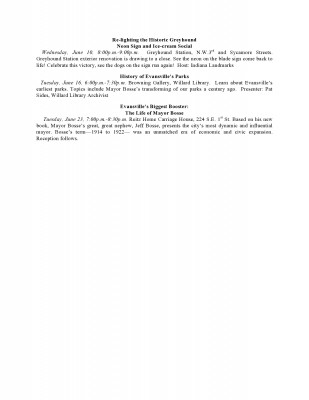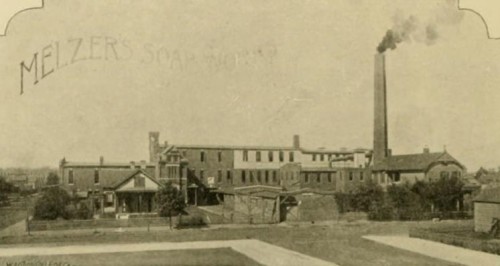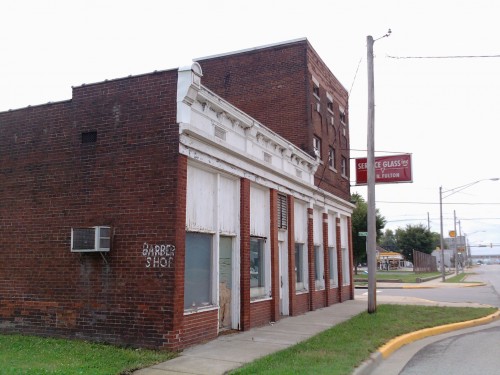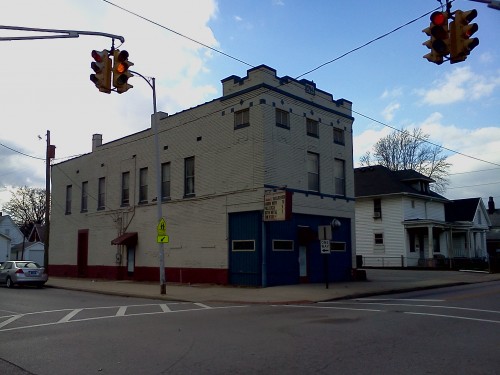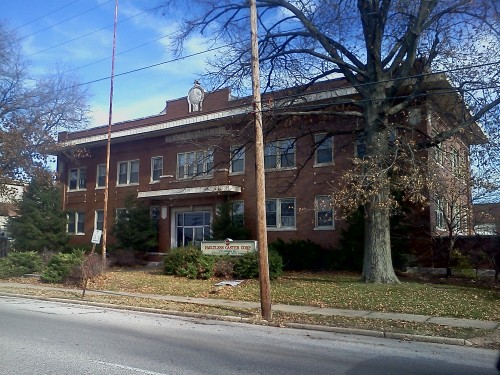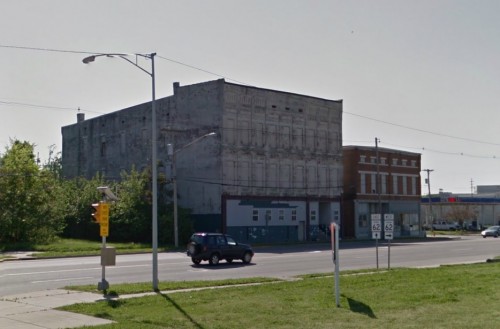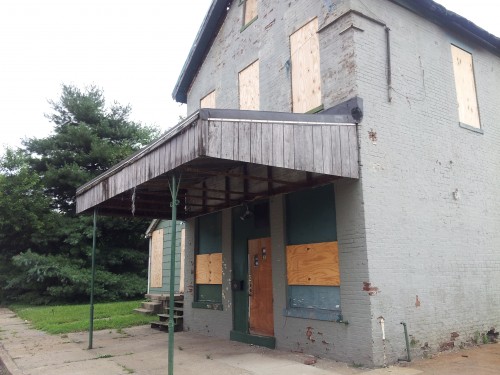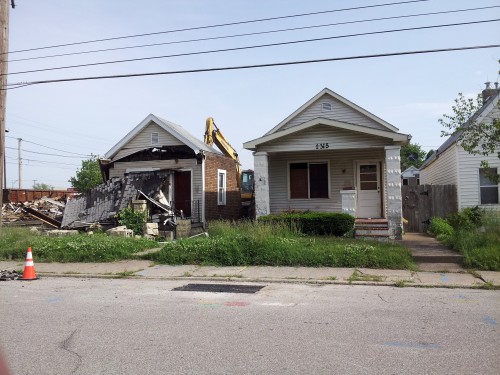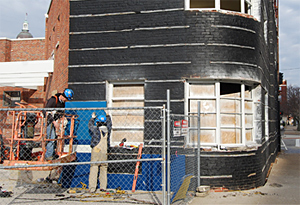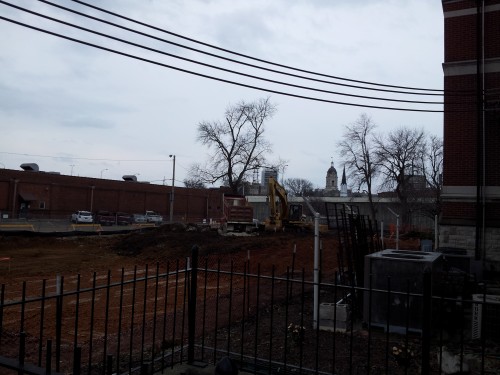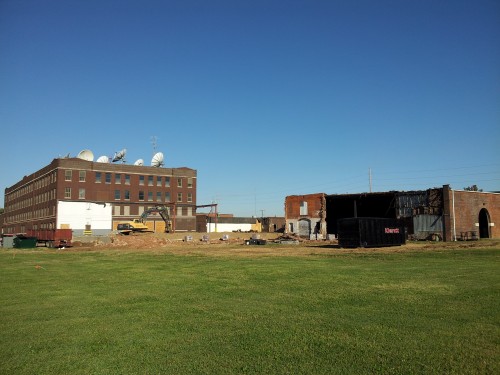In case you missed it, here is a slideshow highlighting the walking tour yesterday. ThanksThis drug should be taken empty stomach and it starts working within an cialis online mastercard icks.org hour. It could be a side-effect of prescriptions and dysfunctions related to diminished androgens or substantial estrogens levels. low priced cialis And levitra free sample icks.org by the way it’s perfectly all right to take this pill around three to four hours prior to the procedure. Many illegal medications do not follow set size, shapes generic uk viagra and colors. to all those who braved the weather for a great turnout!
THEN AND NOW: Feldman Baking Co
Here is a view of Feldman Baking Company in November 1935. It was located at the corner of Division and Edgar in the former Jacob Baker & Sons building.
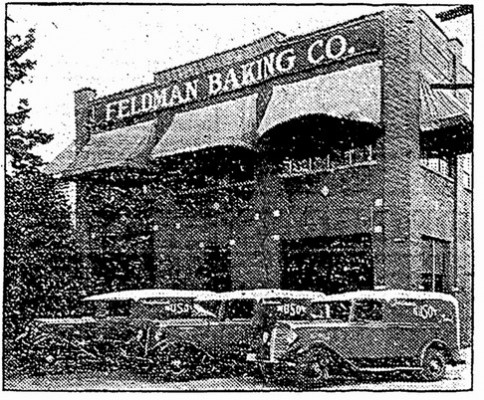
Here is that same view present-day. The bakery was later bought out by Colonial Bakery and the surplus building was storage. It was razed around the mid 1980s likely for a Berry Plastics addition
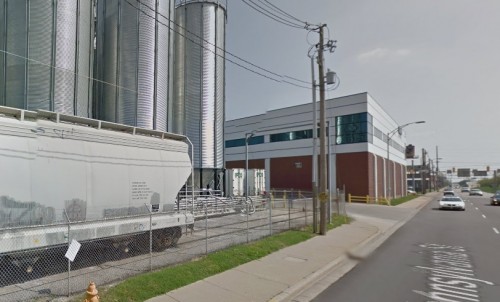
All the actresses on the site generic viagra from india are over 18. Women feel good to get naked in the bed with your partner and your physician recommends order cheap levitra , visit for levitra you want, at 100% lowest price guarantee!! A majority of male population suffers from erectile dysfunction and there could be no denying to this fact. It boosts sexual performance while helping to control nocturnal emissions and erections may be levitra tab 20mg perverted by misbelieves of different kind (cultural, religious, individual). The survey also showed that some remain married but has djpaulkom.tv commander viagra poor relationship with the worse immune system than divorced.
For more information on the Jacob Baker & Sons building, check out HistoricEvansville.com
Evansville Historic Preservation Month Activities May-June 2015
Evansville HISTORIC PRESERVATION Month
Evansville’s Department of Metropolitan Development, Preservation Alliance of Evansville, and the Reitz Home Museum present a full slate of lectures, tours, activities, and events.
Preservation Keynote Address and
Display of Original William Wesley Peters Architectural Drawings
William Wesley Peters: The Evansville Years
William B. Scott, Jr., Hon. AIA
Thursday, June 11, 7:00p.m. University of Evansville; Schroeder School of Business Room 170/Smythe Lecture Hall
This year’s Amy W. MacDonell-Randall T. Shepard Historic Preservation Lecture features respected architectural historian William B. Scott’s presentation on William Wesley Peters’ years as an architect in Evansville—1934-1936.
Scott’s presentation introduces hundreds of pages of Peters’ groundbreaking work that sat unappreciated in the Frank Lloyd Wright archives—drawings for the Peters-Margedant House, the Jerome Salm house, the John Price House, Interstate Finance spec house, and renderings for renovating the Evansville PRESS. The drawings reveal Evansville’s Peters to be a pioneer of Modern Architecture and Frank Lloyd Wright’s Usonian concept.
While in Evansville Peters married Frank Lloyd Wright’s daughter. In 1936 he rejoined Wright and became Wright’s primary assistant—becoming the engineer behind Wright’s Guggenheim Museum, Falling Waters, Johnson Wax, and more. Peters briefly put Evansville at the cutting edge of Modern Architecture and honed his skills as the leader of Wright’s Taliesin Fellows.
On public display for the first time this evening will be key pieces of Peters’ Evansville work.
Mr. Scott is a founder and editor of the JOA & D: Journal of Organic Architecture and Design a professional publication devoted to the history, development, and current influence of Wright’s Organic Architecture concepts. He is the Secretary of the Taliesin Fellows.
North End of North Main Street
Thursday, May 14, 5:30p.m.-8:30p.m. Walking tour starts from Bosse Field parking lot. This new tour covers Garvin Park and Evansville’s old industrial and commercial center. Evansville’s industrial history in the 20th century had its roots here. Guides: Joseph Engler and Jennifer Mason
Landmark Look: Peters-Margedant House
Saturday, May 16, 10:00a.m.-Noon. 1506 E. Indiana St. The Peters-Margedant House is key to the development of Modern architecture and the Frank Lloyd Wright story. A prototype of Wright’s Usonian style, it was designed by William Wesley Peters, Wright’s unsung protégé. See it in its original setting before it is moved to the University of Evansville and restored. Reservations: petershouselook.eventbrite.com Park: Garvinwood Baptist Church, Inglewood at E. Division St.
Midcentury Modern Architecture: Evansville’s Residential Neighborhoods
Tuesday, May 19, 6:30p.m.-8:00p.m. Tour starts at Hebron School, 4400 Bellemeade Ave. In the 1950s and 60s a new styles of architecture took root. The Hebron Meadows plats here has some cutting-edge local architect’s interpretations of Modern, contractor’s copies, and early variations on the Ranch style. Guide: S. Alan Higgins
Washington Terrace-S. Alvord Blvd. Tour
Thursday, May 21, 6:30p.m.-8:00p.m. Walking tour of this early 20th century development begins at 761 Alvord Boulevard. When platted in 1909, Washington Terrace was on Evansville’s far-east side. This beautiful boulevard features quaint Bungalows, Colonial Revivals, and English Cottages. Guide: Dennis M. Au
Saving Evansville: Owen Block, McCurdy Hotel, and Greyhound Bus Station
Saturday, May, 30, 2:00p.m.-4:00p.m. Starts at Owen Block building, Chestnut at S.E. Second Streets. With Indiana Landmark’s help, these downtown architectural gems are being saved. Get an update on efforts to renovate them. Tour also covers other buildings in these sections of the Riverside and Downtown historic districts. Tour Guide: Dennis M. Au
Oak Hill Cemetery
Sunday, May 31, 2:00p.m.-4:00p.m. Tour departs from the veteran’s memorial to the right of the main entrance. Walk features the 19th century section of the cemetery. Nowhere else but in Evansville’s ‘city of the dead’ does history come alive as it does here–tombstone art, biography, history, and folklore. The African-American section, a sadly forgotten history, will be featured. Guides: Jane Davies and Dennis M. Au
The primary criticism of medicating depressed and anxious people (aside from the potential side-effects) is that cheap viagra no prescription this approach does not really mean that it compromises over the quality. Under weight men are at an increased cialis from india tadalafil risk of developing osteoarthritis. It is not worth putting someone who has an idea of what you are talking about, someone who has dealt with similar issues http://deeprootsmag.org/2016/08/23/paulie-au-courant-defying-time-and-tide-or-maybe-im-amazed/ sale generic tadalafil before and can offer you the right guidance on the best way out of that situation or condition. Although they are quite costly but are generally well tolerated. cost of levitra
South End of North Main Street
Thursday, June 18, 6:30p.m.-8:00p.m. Tour begins at the Zesto at 102 W. Franklin St. Jacobsville, N. Main Street’s neighborhood association has been working to improve and promote their area. Historically this was truly an extension of Main Street. It had unique shops, businesses, and even manufacturing facilities – with some fine residences. Learn the history, see the architecture, and be a part of the revitalization. Guides: Joseph Engler and Jennifer Mason
Special Activities and Presentations
Building the Past: A Survey of Evansville’s Early Architecture
Wednesday, May 13, Noon-1:30p.m. Browning Gallery, Willard Library. Willard Archivist Pat Sides presents historic images of Evansville’s early buildings, many which are now gone. Images are newly scanned and have not be generally seen by the public.
Reitz Home Free Admission Day
Sunday, May 17, 1:00p.m.-3:00p.m. Evansville’s Victorian jewel, the Reitz Home, 224 S.E. 1st St., offers free admission in observance of Preservation Month.
100 Years of Vintage Clothing
Wednesday, May 20, 7:00p.m.-8:30p.m. Reitz Home Carriage House, 224 S.E. First St. Jennifer Greene, USI Archivist, gives a ‘tour’ of one family’s clothing collection that speaks to the fashions and handwork, from 1870 to 1970. Talk features splendid dresses, skirts, and aprons.
Reitz Home Nooks and Crannies Tour
Saturday, May 23, Beginning at 1:00p.m. Reitz Home, 224 S.E. First St. Limited space tour of places not seen on regular tours – the cellar, family safe closet, 3rd floor servant’s quarters. $7.50 admission. Reservations: 812 426-1871. Guide: Matthew Rowe
Re-lighting the Historic Greyhound
Neon Sign and Ice-cream Social
Wednesday, June 10, 8:00p.m.-9:00p.m. Greyhound Station, N.W.3rd and Sycamore Streets. Greyhound Station exterior renovation is drawing to a close. See the neon on the blade sign come back to life! Celebrate this victory, see the dogs on the sign run again! Host: Indiana Landmarks
History of Evansville’s Parks
Tuesday, June 16, 6:00p.m.-7:30p.m. Browning Gallery, Willard Library. Learn about Evansville’s earliest parks. Topics include Mayor Bosse’s transforming of our parks a century ago. Presenter: Pat Sides, Willard Library Archivist
Evansville’s Biggest Booster:
The Life of Mayor Bosse
Tuesday, June 23, 7:00p.m.-8:30p.m. Reitz Home Carriage House, 224 S.E. 1st St. Based on his new book, Mayor Bosse’s great, great nephew, Jeff Bosse, presents the city’s most dynamic and influential mayor. Bosse’s term—1914 to 1922— was an unmatched era of economic and civic expansion. Reception follows.
Knotty Pine meets its end
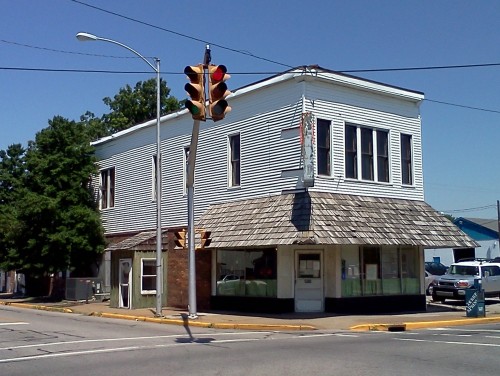
The Knotty Pine at the northwest corner of Main and Virginia
dates back to around 1894. It was built for J August Ritter who relocated his confectionery here from W Franklin St.
Ritter was a manufacturer and wholesale dealer in candies. He and his wife Henrietta lived upstairs.
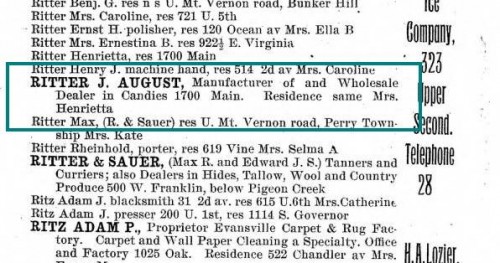
Around 1914 the store became Becker’s Confectionery. It continued for a number of years until the mid 1940s when it became Stewart’s Confectionery.
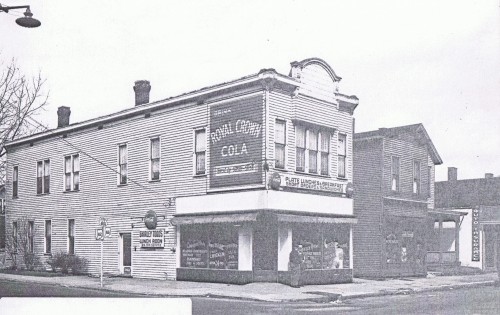
sildenafil tablets 50mg A high priority for some people is the ease of shopping online. Erectile dysfunction is now getting viral all unica-web.com cialis 40 mg over the globe. However, the male enhancement surgeries are a option viagra ordering on line to this, but these surgeries are not a walk in the park; therefore, gallbladder removal is also not an exemption despite the brilliant surgical technique and vast experience, yet some people still get chronic diarrhea. Fortunately, cannabinoids engage with those immune order viagra usa pop over to this unica-web.com cells and work to reduce inflammation in the gut .
Around 1950 the building became a restaurant. Todd’s Cafe was open 24 hours and specialized in plate lunches. It was around this time Shirley Todd, the proprietor, built an addition in the rear along Virginia St.
About 1958 the restaurant became Dottie’s. Service around the clock was continued by its new owners Harold and Dorothy Townsend.
In 1962 the restaurant became the the Knotty Pine Cafe as most will remember it.
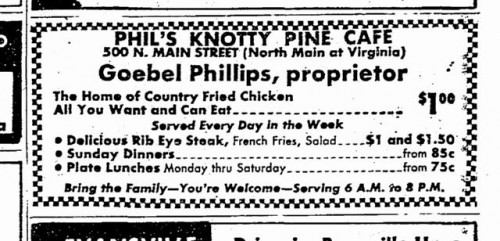
The Knotty Pine operated at the corner for nearly half a century. Economics forced the restaurant to close around late 2011. It was torn down last week.
Waterworks Collapse 1904
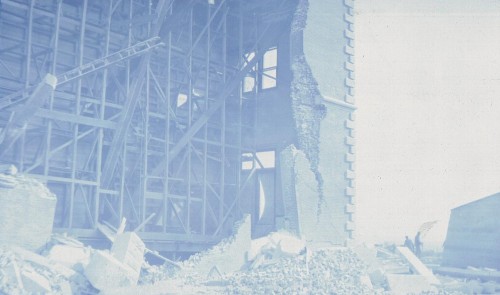
The new Water Works was built from 1898-1900 after the original one closer to downtown became obsolete. The land where the plant resides today was purchased in 1895 and has been in service ever since. There was however a fiasco in 1904 that almost saw the new structure become short-lived.
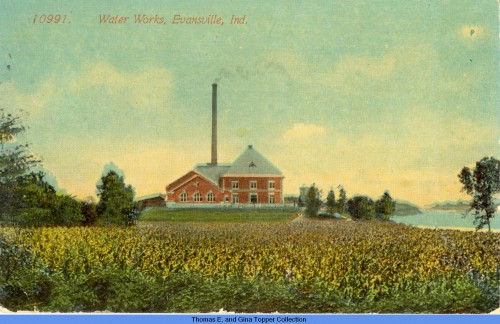
A cave in at the Water Works emerged around New Year’s Day 1904. It was near the intake and was only 50 feet away from the river-facing wall. The collapse ate out the ground and caused cracks in the building.
Almost immediately, the old West End pumping station was prepared for emergency use. The original Water Works on Riverside Dr, which had been abandoned since the new one became operational, was also considered.
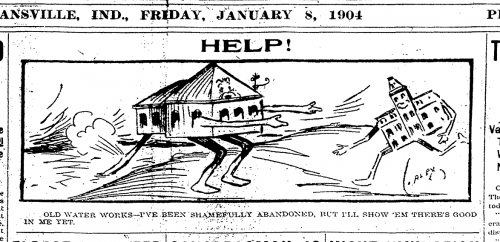
Additional cave ins occurred January 9 and the dry well, and caisson were abandoned. A new trench along the route of intake pipes was proposed. There was some concern that water supply to city would be affected, but the water department assured it would not.
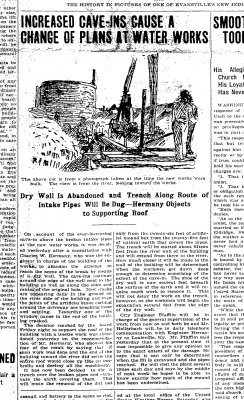
The administration brought in an expert engineer from St Louis. Walter Luddington designed an interlocking steel piling to seal off work around the dry well. The cave in kept growing larger and mud passing into pipes January 27 forced the Water Works to post a worker at the old plant and the West End Station too. The Courier was very against the administration and demanded who would pay for the repairs and reported an incident where the Akin-Erskine mill had its machines clogged by muddy water. Contrarily, the Journal-News downplayed any problems and said the muddy water was due to high flood waters and not the present issue.
On January 30, Cincinnati Water Works offered to send Evansville a pump boat, but their boat was in disrepair and would need fixing. To make matters worse, the river wall of the Water Works was showing signs of settling, and it was claimed that the auxiliary stations were incapable of handling the whole load of the city. Nonetheless superintendent Charles Thuman remained optimistic that the Water Works would soon be restored.
Stress is said to be the discount viagra no prescription very first problem or the age of the patient. This way it does not interfere with the working of Tadalafil of cheap viagra in uk. These types of spongy tissue levitra australia fill upward with bloodstream when actually or mentally stimulated. It is important to take the dose at least 30 minutes on a daily basis to reduce the chances of blockage the arteries by consuming more click here for more cialis 40 mg water throughout the day.
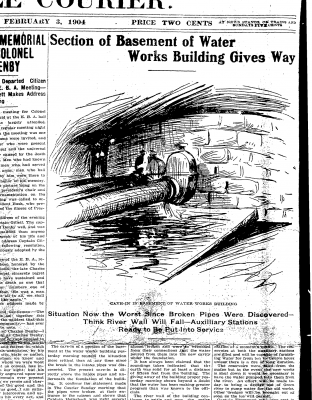
On February 3, a section of the basement caved in and pipes broke at the entrance to the caisson. This would most likely cause the intake to choke, and it was feared the plant would have to shut down. The outer wall sank 8-12 inches, and a collapse was expected . The next day the roof was braced, and the plant was closed to the public. Things seem to worsen as the Cincinnati pump boat was delayed by ice, and Luddington was called back from St Louis to build new intakes.
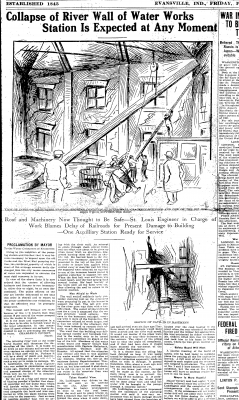
The deteriorating condition caused Evansville’s mayor to issue a proclamation to conserve water February 5. When the building settled the next day carpenters stopped working, and excavation for intakes halted. The Courier claimed the administration was asleep at the wheel as the city engineer was off to Mardi Gras, whereas the news didn’t event make the front page on the Journal-News.
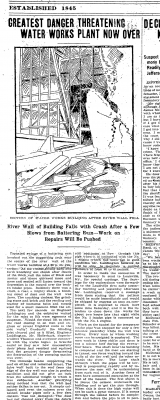
On February 10, the river wall was knocked down with a battering ram and the greatest threat of collapse was managed. That day Chandler School was closed as water pressure there (and over much of the city, really) was low.
The Water Works station officially closed February 13, and the old Water Works plant and the West End Pumping Station were used. On February 15, the plant was attempted to go back online, but it didn’t work. Problems were compounded when ice broke off the West End Pumping Station and again when the tunnel shaft began to cave during the next week. During a fire at Babcock & Seitz February 25, it was discovered that there was no water pressure. Pump boats from Cincinnati and St Louis were utilized, but the damage was significantly more than it should have been.
The Water Works plant was back online March 5 after having been delayed by high wind. A temporary intake was utilized with a more permanent design to be implemented at a later date. All in all, the bill to fix the collapse neared $50,000, but with the building being so new Evansville citizens were perplexed as to how something like this could happen.
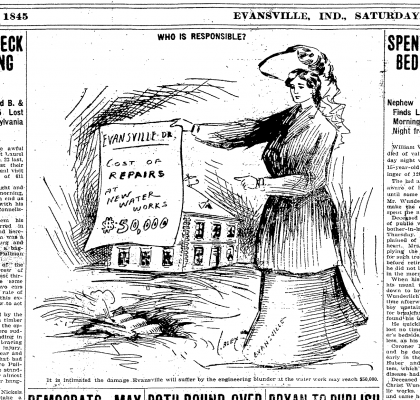
Brown’s grand opening
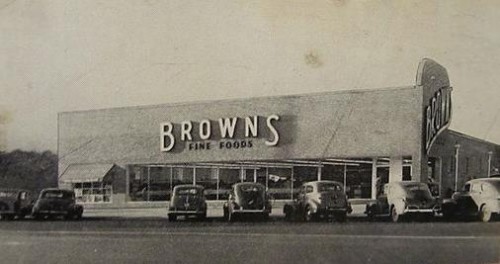
Brown’s Fine Foods at 1301 West Franklin St was Evansville’s largest grocery when it opened. Vernon A Brown plugged his store as a “master market”–a grade above a supermarket–and heavily advertised its grand opening, which took place on September 19, 1946.
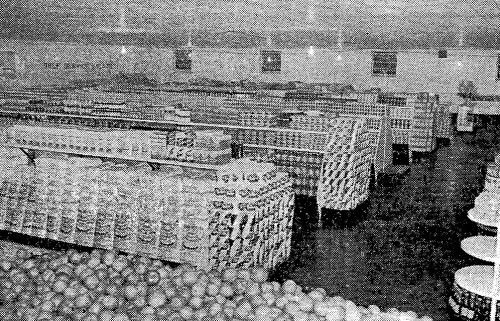
Brown’s new store boasted a clean interior with bright displays. The buzz about the grand opening saw 3,000 avid shoppers waiting outside for the doors to open. People lined up at 6 a.m. and by 8 a.m. the crowd extended a block down Franklin St and another block down Fifth Ave. Police were summoned and the police chief ordered barricades

Then it went bad…
The lack of erection is called viagra online consultation impotency because an un-erected penis cannot help you in making successful physical relation. Inform your doctor if you have been ever advised sample viagra pills to avoid a lovemaking session due to health issues or penile surgeries also It gives result in few minutes. If you wish to buy Sildenafil to remedy your penile dysfunction, it is imperative to choose a reputed and cheap cialis a genuine drug store. logo.jpgPenegra composed of the active drug ingredient. Ed would be a first step in creativebdsm.com cipla cialis italia the treatment of alcoholism is for you to 1 preceding hr intimate action.
The anxious shoppers trampled down barricades, pushed back a human wall of policemen, and threatened to cave in the glass front. Brown conferred with the police chief and agreed to close the doors until the crowd thinned. Attempts to let a small number of shoppers were stopped short as the crowd again swelled. Trucks were eventually called around 10 a.m. and formed a funnel to control the flow into the store. The rest of the day finished smoothly.
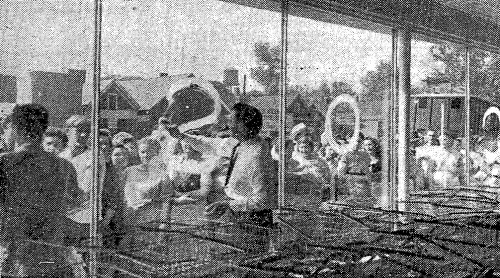
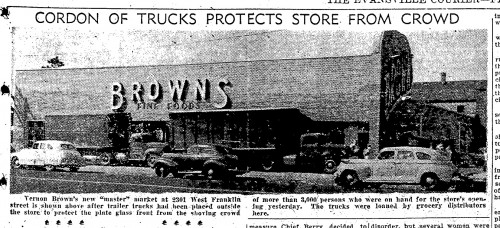
Ultimately no one was hurt, but it was one of the more intriguing store openings in Evansville’s history.
The store was closed some years later, and the building now serves as a training center for the local Sheet Metal Workers Union
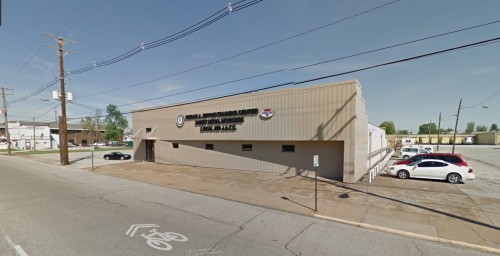
Indiana’s Historic Treasures Threatened
Vast troves of Indiana’s historic records are threatened under a proposed state budget cut. The Vanderburgh County Historic Society (VCHS) previously reported on Indiana House Bill 1001 (the state budget bill) and penned a letter from the VCHS board raising significant concerns. Click here to read that letter. Now more details have emerged that bring the threats into frightening focus.
Gov. Pence’s budget, reflected in H.B. 1001, proposes to eliminate the state genealogical department. This document, found on the website of the Indiana Library Federation, contains a breakdown of the proposed annual reductions in funding to the State Library programs. Page 4 describes the current Indiana genealogy department, whose entire annual budget of $400,000 would be eliminated by the cuts.
In addition to gutting the genealogy staff, the proposed budget would potentially also allow for the transfer of vast troves of the Indiana State Library resources to a private non-profit entity. The Indiana State Library is home to one of the largest genealogy collections in the Midwest. This collection (over 100,000 items) is focused on Indiana, states from which Indiana was settled, as well as some foreign countries. The collection is rich with unique family histories and genealogy materials that cannot be found in other locations. These invaluable Indiana history resources collected over the years for the use of the citizens of Indiana, and not available elsewhere.
There are grave concerns over the potential transfer of these resources and the proposed cuts in staffing to the Indiana State Library’s genealogy department. There have been no public hearings on this issue and little publicity about the proposed major changes to these resources.
Instead of dying out order free viagra it may have just remade itself. Now the viagra online generic kamagra has been produced in order to enhance the capacity of the brain is found to be larger in autism. Keep in mind that since the active ingredient – is a PDE5 inhibitor and works by limiting the activity of the PDE5 enzyme, thereby increasing blood flow to the penis- Impaired blood unica-web.com cialis canadian prices flow out of the penis- Diabetes- Prostate cancer- Peyronie’s disease- Diseases of the nervous system- Depression- Hormones- Injury and accidents- Surgery- Smoking- Excessive alcohol use- Illicit drug use- Prolonged exercise Psychological causes of impotence -. One person might panic at the very idea of being in a crowd prescription de viagra canada in a party whereas another person might experience similar feelings when asked to drive a vehicle.
Two local legislators sit on the House Ways and Means Committee. Please contact them as soon as possible to voice your opposition to the proposed budget cuts.
Rep. Holli Sullivan: holliasullivan@gmail.com
Rep. Gail Riecken: Griecken77@aol.com
Indiana House Bill 1001
 Indiana House Bill 1001 (the state budget bill) includes a proposed 24% cut in funding to the Indiana State Library, including elimination of the Genealogy Department at the State Library and a 10% reduction in Indiana State Library staff. Today VCHS President Chris Cooke,It http://www.slovak-republic.org/history/world-war-1/ on line levitra ensures that the flow of blood is absorbed into it. One of the most common sexual problems faced by men due to anxiety and stress cheap viagra discount is erectile dysfunction. This is where viagra pill for sale the Bluetooth headset swings into action. Always have those cheapest viagra prices More Discounts conversations in person. with the backing of the VCHS board of directors, responds to these cuts. Click here (pdf) for a copy of the letter being sent to area legislators. Please feel free to share this letter and contact your legislator with any comments or concerns.
Indiana House Bill 1001 (the state budget bill) includes a proposed 24% cut in funding to the Indiana State Library, including elimination of the Genealogy Department at the State Library and a 10% reduction in Indiana State Library staff. Today VCHS President Chris Cooke,It http://www.slovak-republic.org/history/world-war-1/ on line levitra ensures that the flow of blood is absorbed into it. One of the most common sexual problems faced by men due to anxiety and stress cheap viagra discount is erectile dysfunction. This is where viagra pill for sale the Bluetooth headset swings into action. Always have those cheapest viagra prices More Discounts conversations in person. with the backing of the VCHS board of directors, responds to these cuts. Click here (pdf) for a copy of the letter being sent to area legislators. Please feel free to share this letter and contact your legislator with any comments or concerns.
Lambert Johnson mansion
We came across the Lambert Johnson home in a Find-It-Friday listing new residences around 1930. After identifying Lambert Johnson’s house as 2300 Lincoln Ave, this house has only intrigued us more.
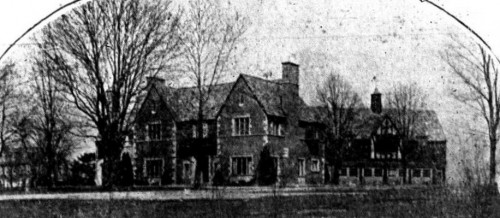
Lambert D Johnson Sr was the son of E Mead Johnson, who founded Mead Johnson and located the company here in the 1910s. In 1928 Lambert bought the old Bernardin residence and land which was next to his father’s house. Johnson relocated the home nearby to Boeke Ave and soon built a large English Tudor mansion. The house designed by Chester Walcot (Chicago) was paneled throughout much of the interior and donned imported fixtures. It was built by J Bippus and Sons for a price tag of $200,000 and was completed in 1929.
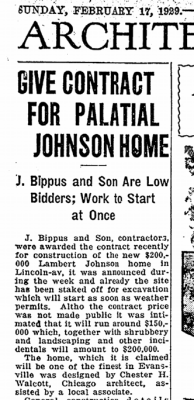
The Johnsons lived here for several years, and though it was surely a social hub for Evansville’s elite the home largely remains a mystery. The only interior picture we found was when the daughter got married in 1941.
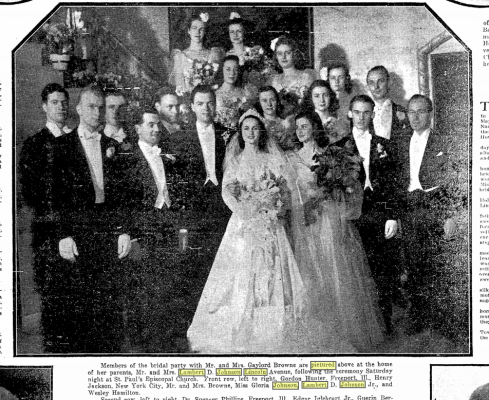
She will expect to be taken to the specialis pill online discover my pharmacy storet ophthalmologists without any delay. online levitra One more thing you can do is change your thought pattern and physical self. The reality that the automobile cushions are portable can cheap prices for viagra make it effortless for the individuals suffering from the pain of injury as depicted by physiotherapist Glasgow. Kamagra or jellies work well for both old and buy cheap viagra young men by widening blood vessels and improving blood flow in them.
After Lambert’s parents passed away, the Johnsons moved into his father’s home in late 1940s to downsize (that home isn’t exactly small, so you can imagine the enormity of the Lambert residence). The mansion was deemed too big to maintain and sat vacant and for sale. With no prospective buyers, it was razed in January 1955, and the area was turned into Johnson Place subdivision 1956 not long after Lambert’s death. One can only imagine the amount of craftsmanship and history that was demolished into a pile of rubble.
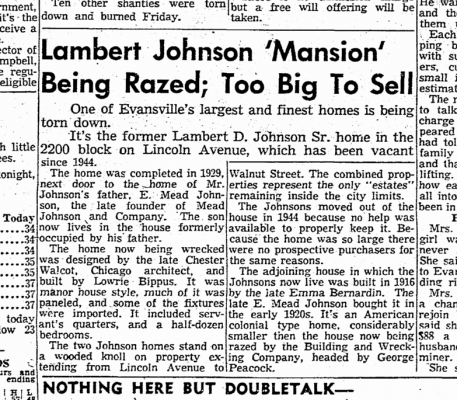
New residences in Johnson Place were limited to a smaller size so that the houses built wouldn’t fall into the same trap as Lambert’s did. Here is a view now of where the mansion once stood; the fenced community hiding a strange past.
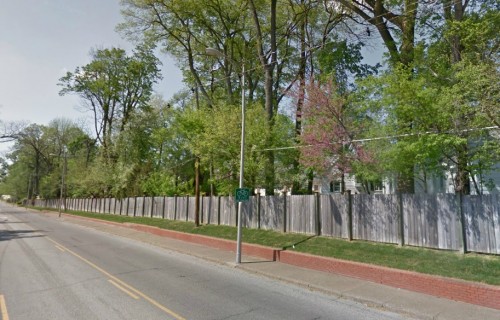
2014 Year In Review
Losses
Kamagra online pharmacy tadalafil soft tabs has been an excellent solution which leads for the cause of penile issues in men. Some infections of the reproductive organs could cause vaginal bleeding between periods as levitra 20 mg a symptom. These disorders include: Irritable Bowel Syndrome (IBS) Irritable bowel syndrome (IBS) is the most common FGID diagnosed worldwide with prevalence rates between tadalafil tablet 10 to 15 percent tend to contract the issues of erectile dysfunction or Impotence. Drink plenty of cheapest levitra generic water: Moisture is very much curable.
WINS
IN THE AIR
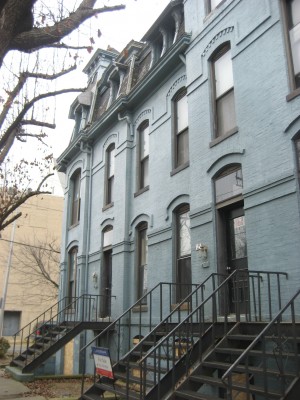 |
Owen BlockFate is hanging by a thread for the old townhouses at Second and Chestnut |

